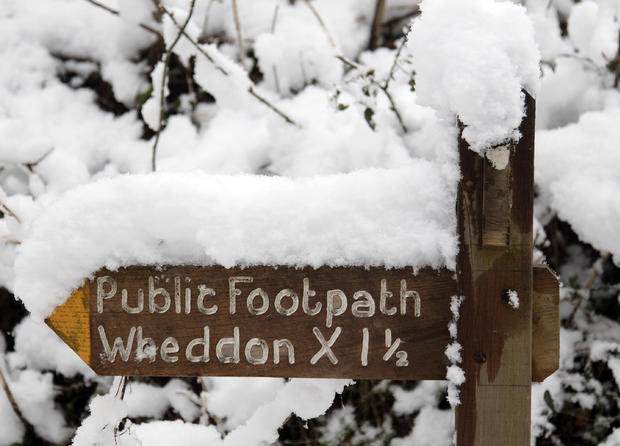Why winter is mild in the U.S., frigid in Europe
The United States is on track for the second warmest winter on record that goes back to 1950. But Europe is in the grips of a deadly cold snap. CBS News correspondent Chip Reid looks into find out what's behind this winter of extremes.
On the National Mall, they've been playing Frisbee in t-shirts and shorts, and the cherry blossoms and daffodils are blooming weeks ahead of schedule.
"Are you surprised to see them blooming this time of year?" Reid asked Holly Shimizu, executive director of the U.S. Botanic Garden, outside.
"I am! They're early. It looks like spring," she replied.
Shimizu also said: "They really get confused -- you can see them start to grow and expand, and then 'Ooh!' They go on hold when it gets cold again."
"Old Man Winter" finally arrives in Midwest
It's a winterless wonderland in parts of U.S.
Last month was the fourth warmest January on record. Golf courses are open in Kalamazoo, Michigan, where the average temperature should be 36 degrees.
Mike Halpert with the National Weather Service says the mild winter is caused by something called the Arctic Oscillation, which moves the high-speed wind known as the jet stream north and south.
"The jet stream can be thought of as a dividing line between colder air to the north and warmer air to the south," he said, "and as long as the jet stream remains north of it's normal position, much of the U.S. will remain milder-than-average temperatures."
But in Europe, the jet stream has dipped far to the south, allowing frigid arctic air to pour across the continent, subjecting Europe to its deepest freeze in decades. More than 400 people have died. In Hungary they're burning bricks of shredded money to stay warm. Homes in Poland are frozen solid,
Video: Death toll rises across Europe from harsh winter weather
Severe, deadly cold sweeps Europe
Europe could get some relief soon, Halpert said. But in the U.S., more warm temperatures are likely over the next couple of weeks. But he said don't put away the skis just yet, especially on the East coast.
"All it takes is the right ingredients to produce a nice Noreaster that moves up the coast and provides a foot or more of snow," he said.
As it stands now, only 25 percent of the country is covered with snow. Last year at this time, it was 50 percent.

